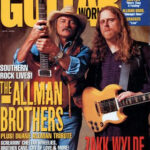The Gb Major chord, also known as the F# Major chord, might seem a bit daunting at first, especially for beginner guitarists. It’s not played using open strings, and often involves barre chords, which can be tricky to master. However, the Gb chord is a crucial part of guitar playing, appearing in various musical genres and keys. This guide will break down everything you need to know about the Gb Guitar Chord (“gb guitar chord”), from music theory to practical playing techniques, helping you add this essential chord to your repertoire.
Understanding the Gb Major Chord: Music Theory Basics
To truly master any chord, including the Gb chord (“gb guitar chord”), it’s helpful to understand the underlying music theory. The Gb Major chord is built upon the Gb Major scale. Like all major chords, it’s a triad, meaning it consists of three notes:
- Root: Gb
- Major Third: Bb
- Perfect Fifth: Db
These notes (Gb, Bb, and Db) are the 1st, 3rd, and 5th degrees of the Gb Major scale, respectively. Another way to think about the Gb Major chord’s construction is through intervals. From the root note (Gb), the chord is built using:
- A Major Third interval to reach Bb.
- A minor third interval from Bb to Db.
- A perfect fourth interval from Db back to the root (Gb) an octave higher.
It’s worth noting the enharmonic equivalence: Gb Major and F# Major are the same chord in terms of sound and finger placement on the guitar. They are just named differently depending on the musical context and key signature.
10 Ways to Play the Gb Chord on Guitar
Let’s dive into the practical aspect: playing the Gb chord (“gb guitar chord”) on your guitar. Here are 10 different shapes, ranging from beginner-friendly to more advanced voicings:
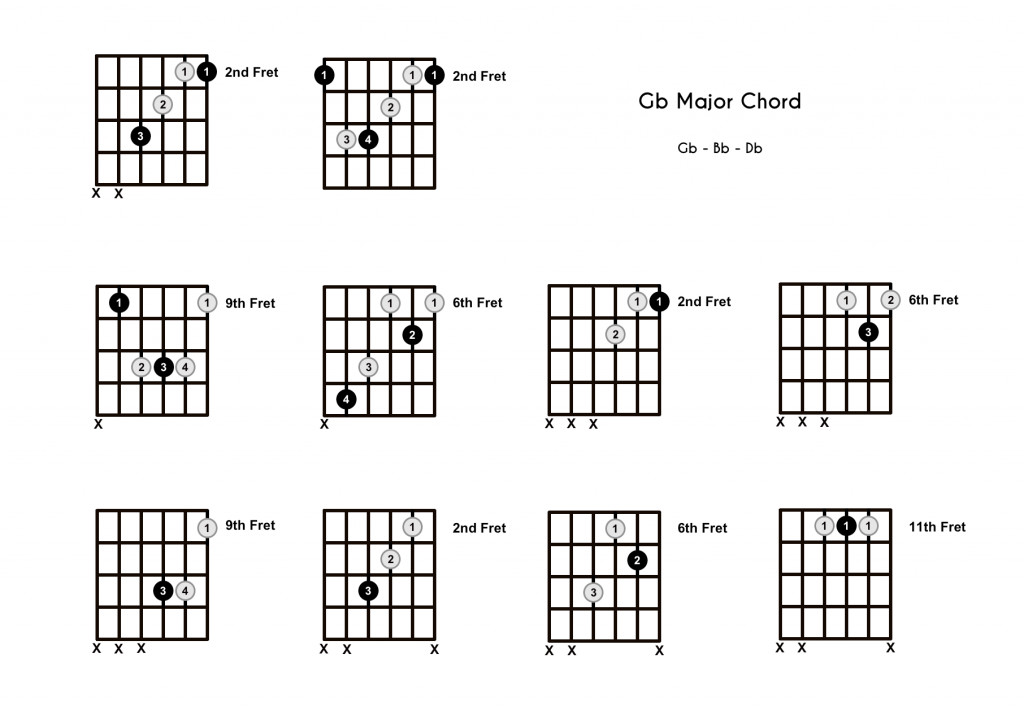 Gb Major Chord – 10 Shapes
Gb Major Chord – 10 Shapes
The Standard Gb Barre Chord Shape
The most common way to play the Gb chord (“gb guitar chord”) is using the root-6 barre chord shape. This is a movable shape derived from the open E Major chord, barred up the fretboard. To play the standard Gb, you’ll barre across all six strings at the 2nd fret.
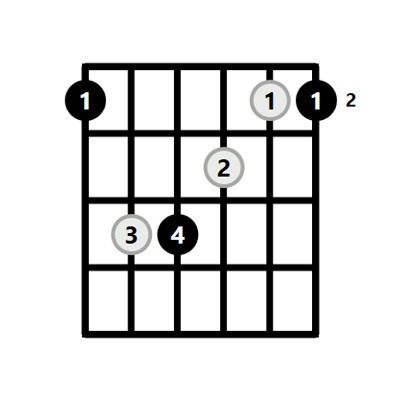 Gb Chord Guitar
Gb Chord Guitar
Step-by-Step Instructions for the Standard Gb Barre Chord:
- Index Finger: Barre your index finger across all six strings at the 2nd fret. Ensure a firm and even pressure to get a clean sound from all strings.
- Ring Finger: Place your ring finger on the 4th fret of the 5th string (A string).
- Pinky Finger: Place your pinky finger on the 4th fret of the 4th string (D string).
- Middle Finger: Place your middle finger on the 3rd fret of the 3rd string (G string).
- Strum: Strum all six strings.
This barre chord shape provides a full and resonant Gb chord (“gb guitar chord”) sound, making it suitable for many musical styles.
The Easy Gb Chord Shape
If barre chords are still challenging, there’s an easier version of the Gb chord (“gb guitar chord”) you can use. This simplified shape involves only three strings and is excellent for beginners.
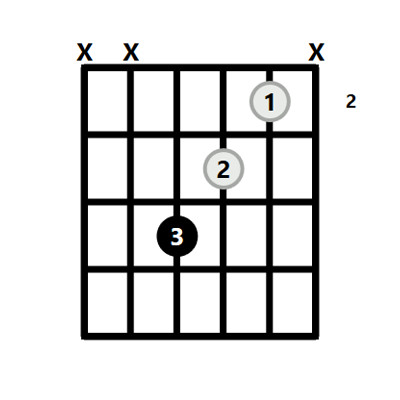 Easy Gb Chord Guitar
Easy Gb Chord Guitar
Playing the Easy Gb Chord Shape:
- Index Finger: Place your index finger on the 2nd fret of the 3rd string (G string).
- Middle Finger: Place your middle finger on the 3rd fret of the 2nd string (B string).
- Ring Finger: Place your ring finger on the 4th fret of the 1st string (high E string).
- Strum: Strum the top four strings (D, G, B, high E). Avoid strumming the lower E and A strings for this voicing.
This easy Gb chord (“gb guitar chord”) shape is perfect for practicing transitions and getting the feel of the chord without the difficulty of a full barre.
Root 5 Barre Chord for Gb
Another common barre chord shape for Gb (“gb guitar chord”) is the root-5 barre chord, derived from the open A Major chord shape. For Gb, this shape starts higher up the neck.
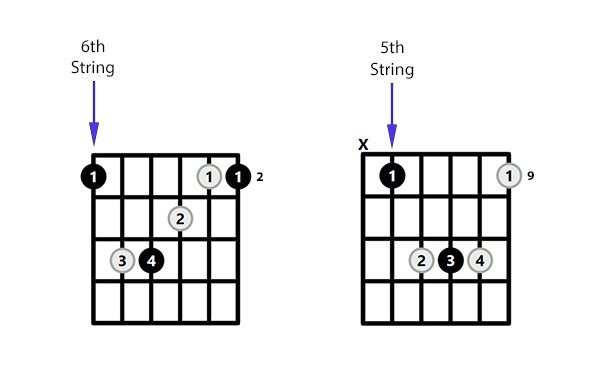 Gb Barre Chord Guitar
Gb Barre Chord Guitar
To play the Gb root 5 barre chord:
- Index Finger: Barre your index finger across all six strings at the 9th fret.
- Middle Finger: Place your middle finger on the 10th fret of the 3rd string (G string).
- Ring Finger: Place your ring finger on the 11th fret of the 5th string (A string).
- Pinky Finger: Place your pinky finger on the 11th fret of the 4th string (D string).
- Strum: Strum all six strings.
This root-5 barre shape offers a different voicing of the Gb chord (“gb guitar chord”), often sounding brighter and higher pitched compared to the root-6 barre chord.
Gb Major Triad Shapes
Beyond full barre chords, understanding triads is essential for guitarists. A triad is a three-note chord, and knowing triad shapes for Gb (“gb guitar chord”) can be incredibly useful for lead guitar work, chord melody arrangements, and creating different textures in your playing. The Gb Major triad has three inversions:
- Root Position: Gb – Bb – Db
- 1st Inversion: Bb – Db – Gb
- 2nd Inversion: Db – Gb – Bb
Here are some ways to play Gb Major triad inversions on the guitar neck:
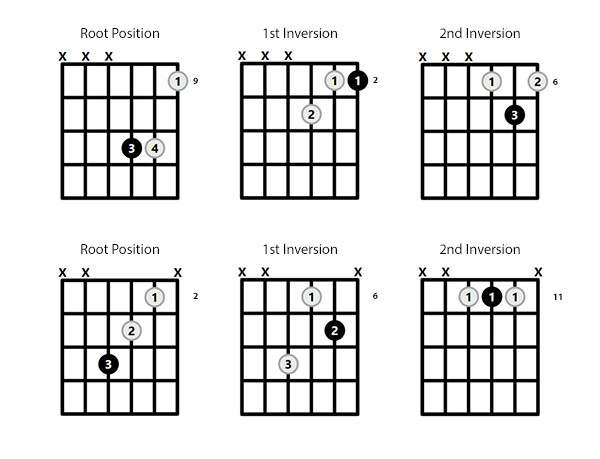 Gb Major Triad Guitar
Gb Major Triad Guitar
Learning these triad shapes for Gb (“gb guitar chord”) will expand your understanding of the chord and give you more flexibility on the fretboard.
Gb Chord in Different Keys
The Gb chord (“gb guitar chord”) appears in several musical keys. Understanding these key relationships helps you see how the Gb chord functions within a song and in chord progressions.
- Key of Gb Major: Naturally, Gb is the tonic (I) chord in the key of Gb Major. The chords in the key of Gb Major are: Gb, Abm, Bbm, Cb, Db, Ebm, Fdim.
- Key of Db Major: Gb is the IV chord in the key of Db Major. The chords in Db Major are: Db, Ebm, Fm, Gb, Ab, Bbm, Cdim.
- Key of Eb minor: Gb acts as the III chord in the key of Eb minor. The chords in Eb minor are: Ebm, Fdim, Gb, Abm, Bbm, Cb, Db.
- Key of Bb minor: Gb is the VI chord in the key of Bb minor. The chords in Bb minor are: Bbm, Cdim, Db, Ebm, Fm, Gb, Ab.
- Key of Ab minor: Gb functions as the VII chord (though often substituted with a G natural in minor keys for harmonic reasons) in Ab minor. The chords in Ab minor are: Abm, Bbdim, Cb, Dbm, Ebm, Fb, Gb.
Knowing these key relationships allows you to anticipate when a Gb chord (“gb guitar chord”) might appear in a song and helps you in songwriting and improvisation.
Gb Chord Substitutions and Related Chords
Sometimes, you might want to add variation or a different flavor to a Gb chord (“gb guitar chord”) progression. Here are some chords that can be used as substitutions or interesting variations:
- Gb sus4, Gb sus2, Gb add9: These suspended and added note chords create a richer, more complex sound while maintaining the Gb root. They are great for adding harmonic interest.
- Gb Major 7: This chord adds a jazzy and sophisticated feel.
- Eb7: In certain contexts, particularly in dominant function situations (leading to Ab), Eb7 can be related to Gb as the bVII7 of Ab.
Understanding chord substitutions opens up creative possibilities and allows you to experiment with different sounds in your music.
Scales to Play Over the Gb Chord
For soloing and improvisation over a Gb Major chord (“gb guitar chord”), certain scales work particularly well:
- Gb Major Scale: The most fundamental scale. It naturally outlines the Gb Major tonality.
- Gb Pentatonic Major Scale: A simplified version of the major scale, great for bluesy and rock-oriented solos.
- Gb Lydian Mode: This mode (4th mode of the C Major scale) adds a raised 4th (C natural) which creates a bright, ethereal sound over the Gb chord.
Experimenting with these scales will help you develop your lead playing and melodic ideas over the Gb chord (“gb guitar chord”).
Conclusion
The Gb guitar chord (“gb guitar chord”) might seem challenging initially, but with practice and understanding, it becomes an accessible and valuable part of your guitar vocabulary. By learning the different shapes, understanding the underlying theory, and exploring its use in various keys and musical contexts, you’ll be well-equipped to master the Gb chord and enhance your guitar playing. Don’t be afraid to start with the easy shapes and gradually work your way up to the barre chords and triad variations. Happy playing!
 Get Guitar Chords Galore eBook
Get Guitar Chords Galore eBook
Promotional banner for a guitar chords ebook, encouraging readers to explore further guitar learning resources.

